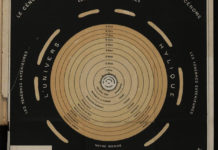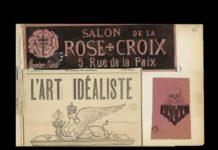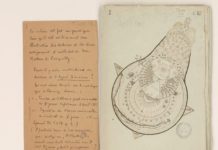Looking for Magic, Alchemy and Kabbalah in the Martinist Order
Todays’ blog post is the third entry on examining the tradition known as the Martinist Order.
This school of thought in particular lends itself to diversity and flexibility. Largely due to the fact that most groups are small units bonded together by friendship rather than by Order hierarchy the activities and teachings of several Martinist Orders remain hidden in veils of secrecy.
There are more public Orders such as Amorc’s T.M.O that have their own monographs and more discrete Orders such as I prefer, which offer mostly oral instruction through friendships.
The Martinist Order is widespread today, with many branches, each carrying various lineages going back to Saint Martin and, as we have seen, to a sect of the Rosicrucians.
Traditionally guided by an invisible force known as the Unknown Superiors the Martinist Order shows its French flavor. In contrast to British systems such as the Hermetic Order of the Golden Dawn, which are said to be more focused rigid ideas such as on Order hierarchy, grades and student test, the Martinist Order in contrast more so qualifies its members through character, trust and bonds of friendship, showing its’ focus on the Way of the Heart.
This particular review commences my methodic approach of examining the Order by comparing it to my earlier established Pillars of the Rosicrucian Tradition.
There are three main Pillars being examined, they are:
- Trinosophia Score.
- Hermetic Christianity Score.
- Pansophy Score.
Used as a measuring stick these Pillars of the Rosicrucian tradition were set in place as guidepost to help determine the strength of the Rosicrucian current in any given Order. So far I have reviewed Amorc. This review is broken into several blog posts & covers the Martinist Order. Next we shall examine the Golden Dawn, completing the reviewing of the major three.
New readers of my blog first need to read my earlier blog post:
- Reviewing the Rosicrucian Orders.
- Scoring System for the Reviews of the Rosicrucian Orders.
- Are the Rosicrucians Really Christian?
- What is Rosicrucian Pansophy?
Rosicrucian Pillars and the Martinist Order
No system is perfect and I doubt a scoring board such as the Pillars of the Rosicrucian Tradition is hardly without problems. Thankfully only a few readers have got their knickers in a knot.
I’d like to thank all readers who have shown their support, through comments, feedback, shares and new friendships. You know who you are. 🙂
Let’s recap the journey thus far, lest we forget where this is all going.
At the outset this blog has established that not only were the three well known Rosicrucian manifestos, but also earlier and later editions. The first of these was called ‘The Reformation of the Whole Wide World by Order of Apollo.’ It was followed by the famous three Rosicrucian manifestos known as the Fama, the Confession and the Chemical Wedding. These were but in fact in answer to the first. The final Rosicrucian manifestos follow, both to mention Pansophy, the final being the ‘Pegasus’ where Apollo appears again, this time to see what the Rosicrucians have achieved in their quest for wisdom and cultural regeneration.
Thus there are in fact six Rosicrucian manifestos.
My Scoring System for the Reviews of the R.C Orders as titled the ‘Pillars of the Rosicrucian Tradition’ show the hallmarks of the tradition based upon these original foundation documents.
 My initial journey was to identify ‘what really is Rosicrucian, and what is NOT.’
My initial journey was to identify ‘what really is Rosicrucian, and what is NOT.’
This allowed me to create what I believe to be an effective measuring stick by which we may review the various Rosicrucian Orders. Today’s blog post will reveal how the Martinist Order fares against them.
Although this blog is becoming an authoritative source on Rosicrucian information let me make clear, and humbly so, that the scoring system is not perfect. Indeed it might evolve.
Nothing is absolute and set in stone. Hey, even Moses broke his first tablets.
‘And it came to pass that when Sam approached the camp
and saw his Facebook fans worshiping the Golden Dawn
and dancing his anger burned, and he threw down his apple tablets,
breaking them into pieces outside of McDonalds.’
Where the reviews might go wrong is in allowing my personal biases to creep in. Generally my belief is that for a blog to be successful it needs some pizzazz and personal opinion. This gives it a ton of flare, but the goal here is to let the facts speak for themselves, while maybe just ‘highlighting’ a few things I (given experience) find favorable about any Order. 🙂
On the other hand there are certain, let us say, ‘parties’ in dealing with the Martinist Order that wish it to specifically BE Rosicrucian, all but in name, and other parties who imagine it as entirely different. The truth is somewhere in the middle.
My previous post on Theosophy vs. Pansophy proved an interesting point: that the doctrines of Jacob Boehme, upon which the works of Saint Martin are based, are in fact a mirror of the Hermetic mythologies employed by the Rosicrucians in their manifestos. Internally the two are very much based on the same phases of spiritual evolution.
But how closely does the Martinist Order really match not only the doctrines but also the practical occult aspects of the Rosicrucians?
This post commences the final say. It took a few re-writings until it was good in the sight of Google:
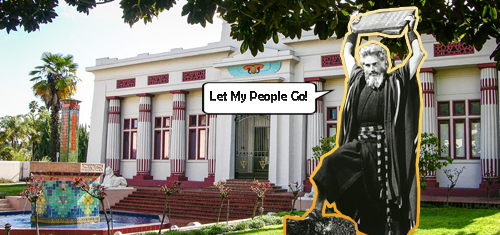
‘And the LORD said unto Sam, go and get two more tablets,
both apples like unto the first: and I shall write on these tablets
the words that were on the first, that you shattered,
but nicer this time.’
This particular review shows Martinism as a diverse tradition. A purist might wish to depend on the teachings of Louis Claude de Saint Martin alone. That is true Martinism.
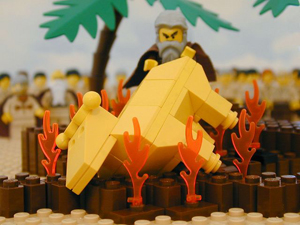 However given the many influences, such as the Elu Cohens, Boehme and Rose Croix d’Orient, which flavor several branches of the Order, Martinism shows that it is more than the ideas of Saint Martin, which is why there are different Martinist Orders fulfilling different criteria of the Pillars of the Rosicrucian Tradition. Some even practice the odd Golden Dawn pentagram ritual, which in most Martinist Orders is a big no-no. All said and done, not all Martinist Orders fulfill all the Rosicrucian Pillars, but as a whole tradition they do.
However given the many influences, such as the Elu Cohens, Boehme and Rose Croix d’Orient, which flavor several branches of the Order, Martinism shows that it is more than the ideas of Saint Martin, which is why there are different Martinist Orders fulfilling different criteria of the Pillars of the Rosicrucian Tradition. Some even practice the odd Golden Dawn pentagram ritual, which in most Martinist Orders is a big no-no. All said and done, not all Martinist Orders fulfill all the Rosicrucian Pillars, but as a whole tradition they do.
‘And Sam took the Golden Dawn books the people had made and burned them in the fire, and ground them into powder, scattered it into the water and made his Facebook fans drink it’
What can I say, tradition is important and Moses had all the fun. Onwards!
Martinist Review Section One: Trinosophia Score
In this post we will examine the Trinosophia Score.
The word means ‘Three Arts of Wisdom.’
The original manifestos clearly specify the paths of Alchemy, Cabala and Magic as being the true arts of the Rosicrucians. The word Trinosophia itself seems to have been coined by either Cagliostro or Saint Germaine, both masters of the Rosicrucian tradition.
As previously mentioned Khunrath identified these three paths of practice, along with a symbol of the Rose Cross before the actual publication of the manifestos. He perceived them as the true arts of regeneration, by which we might repair our state of fallen grace since the time the cosmic Adam was caste out of paradise. This event wasn’t a material Adam but an over-soul of all humanity and universal powers. The three arts would not only help us ascend but also help repair this broken universal being, which was a personification of the broken Cabalistic tree.
Accordingly the Cabala was the property of Adam, which had been lost generations later, but regained by Enoch and again by Moses. Knowing the language of angels and the secret seals God granted unto his prophets would help us regain our lost light. The art of divine magic on the other hand would be the practical aspect of Cabala, the means by which we might impress these divine seals into our soul to help commence the rekindling of our original Adam spark. Then alchemy, by means of exploring Nature, as Gods’ creation, would help invigorate the soul through releasing the original sparks of creation that Adam had as the holy flames of his name.
Thus the combination of the three arts would regain not only our covenant with God but also restore our holy light along with regaining our lost immortality through alchemy.
The Rosicrucians were ambitious to say the least…
Here is how the Martinist Order stacks up in terms of its Trinosophia Score.
Cabala, Alchemy and Magic each offer a potential ten points each for a total of thirty.
Trinosophia 1: Martinist Cabala Score
Martinist Orders are light in approach to Kabbalah, as say compared with Orders that are heavily Cabalistic. However the teachings are there and I find such an approach much more practical as opposed to other systems which get the student far too bogged down in occultism to become a practical mystic. I mean here one who lives in the real world as opposed to remaining forever in the realm of occultism, with their heads buried in books.
Most Martinists agree that mysticism is about life, the heart should show itself in works, their studies are thus well balanced. And even though the Martinist Order appears to be lacking in terms of fully fleshed Qabalah teachings, as given to its members, make no mistake, the writing of Louise Claude de Saint Martin possesses very advanced ideas worth years of revisiting.
Amorc’s section of Martinism known as the ‘Traditional Martinist Order’ (TMO) teaches Cabala in its monographs, as do the Martinist monographs coming out of Canada.
Unfortunately what they teach is nothing already available in published in book form. Then again saying however that Martinist Orders do not have unpublished Qabalistic teachings would be wrong. There are several stations in the temple layout that have a Cabalistic arrangement…
Though not all lineages possess this teaching. This particular gem is quite valuable in that it appears to be a backbone Cabalistic matrix providing power centers to the temple currents. What’s more I have found examples of this matrix within other ‘branches’ of Peladan’s Belgian Rosicrucian manifestations, meaning that there is a Rosicrucian undercurrent to the Martinist temple.
Several Martinist Orders have ‘no official teaching’ which is preferred amongst those who follow the internal way of Saint Martin. Members are left to study his writings and explore related avenues for themselves, with their superiors giving oral instruction.
It must be said that the Hebrew letters are the foundation to any Cabala, so at least as a minimum study most Martinists examine their symbolism, seeing that to Martinist the Holy Name of YhShvh is a central symbol used in temple mediations or mystical theurgy.
The Tree of Life is covered lightly. When discussed I have found Martinist to be more sensitive to capturing the essence of the spheres rather than getting lost in factual diatribe. This appears to be common amongst Martinist who, wishing to avoid the ego in appearing to be the type who says ‘I know more therefore I am superior,’ they approach such knowledge humbly.
This seems to be rooted in Saint Martin’s fundamental ideal; that everything we need is within the heart, mirroring the words of his master. His teachings, by being an extension of Boehme, draw us closer to what we would call the ‘Qabalistic Doctrine,’ which was concerned with very Hebrew ideas, which span across eons of time since the Fall of Adam.
It should be noted that Boehme, as with Saint Martin’s other master Pasqually, both taught the Cabalistic doctrine of the Fall of Adam, called the Doctrine of the Reintegration of Beings.
In both their teachings this Adam was a universal being, an over-soul champion of the universe. His ‘fall’ was not like that described in the Bible, but was a cosmic event. His breaking was the true cosmic catastrophe, the many parts of the broken giant over-soul becoming the wayward souls of the human race. Saint Martin depended on these ideas and various Kabbalistic lineages observe them very carefully, utilizing advanced formula of interpretation.
In the realm of Martinism however the mythos itself is of primary of importance in its mysticism.
This shattering of the universal over-soul is also a mirror of the Qabalistic doctrine of ‘shells.’ Here ancient Cabalists taught that the first Tree of Life, being the first universe that God created, did not share its power properly between the spheres of light, seeing that it did not have paths. These spheres where vessels which became over-filled with the light of God and thus they shattered. Their broken form became what we know as the ‘Qlippoth,’ being the various demons or ‘shells’ that populate the universe.
Notice here the recurring theme between both versions of the story. This is because the Qabalistic Doctrine of the Fall of Adam is really a PERSONIFICATION of the same event. It is central to Judaic branches of mysticism. Where Kabbalah concerns itself with the repairing of the universe and mending of the ‘broken shells’ our Martinism concerns itself with the mending or Reintegration of all souls into the Universal Adam being. Kabbalah does focus on both but it appears the teachings of Boehme/Pasqually/Saint Martin is more one sided. I find this however an advantage because it appeals more strongly to initiates to get the best part of Cabala.
Pasqually and Boehme were quite clearly initiates of the Kabbalistic tradition. Saint Martin’s rendition, although simplified, still remains a chain of this Cabalistic teaching. Where Saint Martin becomes an advanced study is in his own Theosophy, which requires a lifetime of study. Not to mention that his master Boehme is even more advanced for dedicated seekers. The mystical tenets of both however are simple; LOOK WITHIN, engross yourself in prayer.
As I have already reiterated, in approaching Martinism there is more than just Saint Martin. Not everyone looks to their founder because the ‘church has a mind of its own.’ Several Martinist Orders employ the teachings of either or both Pasqually and Boehme, or they outright serve as Outer Orders to bodies that do teach more advanced Cabala, including the Kabalistic Order of the Rose Croix and the Elu Cohens, which is a Cabalistic magical movement.
Here the initiatory transmission of Martinism is itself very Kabbalistic. The highest grade of the M.O is Unknown Superior, which is an empowerment originally given by Pasqually to his Elect Cohens. Martinism has continued this grade/transmission to its members, which according to Pasqually granted the initiate the power to commune with the ladder of angels, call down those beings, and most importantly be guided by the powers of the ancient Hebrew prophets. The Elect Cohens transmission linked one to the hierarchy of beings, even unto God, and was said to be the secret chain handed down from Adam to the later prophets. When it comes to a traditional history there isn’t any stronger Cabalistic lineage than that. That Martinism continues to use this degree shows a very Cabalistic transmission flowing to its initiates.
Thus the power base is there, if one is but pure of heart enough to access it.
In many ways the Martinist Order, with such an empowerment and means to directly experience a connection, does not require any formal Qabalistic studies. One is expected to learn directly through gnosis and receiving instruction through mysticism.
That is true Kabbalah, seeing that the meaning of the word is ‘To Receive.’
The Martinist Order is awarded 5/10 for their Cabala Score.
This all depends on how you want to look at it. Do you want to learn through studies or be left to actually mediate and experience gnosis? The Martinist Order does teach some Cabala, although generally lightly. Various groups will emphasize more, but there is no official Qabalistic teaching, which is why the M.O could do just a tad better here for students.
This emphasis is brilliant for busy seekers. You get all the spirit without all the clap trap.
Trinosophia 2: Martinist Magic Score
Martinist Orders do not typically teach ‘magic’ as such. Being one of the Trinosophia elements described in the manifestos you would think it fundamental that every Rosicrucian Order teach alchemy, Cabala and magic without any excuses.
Alas many M.Os do not consider themselves Rosicrucian.
Even in actual Rosicrucian manifestations we find magic lacking the most.
Why is that? AMORC for example claims that the ‘traditional’ teachings had to be updated and that the same ‘laws’ are taught through modernized approaches. We know however that Harvey Spencer Lewis simply did not have the teachings to go with his transmission, thus he borrowed most of his ideas from westernized yogi mysticism and New Thought books.
Martinism on the other hand does have an excuse not to teach magic. LCM specifically wrote against it. But at the same time his objections do not apply to all forms of the operative way.
Thus most Martinist Orders reject magical operations without any consideration to the full scope of his work. His complaints are mostly in contrast to his first master Pasqually and are against lower astral manifestations that may prove misleading towards magical Regeneration.
Looking at the original documentation, where the R.C manifestos and Khunrath outline magic we are not given any clear cut description of what sort of magic is Rosicrucian or is not.
Clearly Rosicrucians magic was ‘theurgic’ being
aimed towards Reconciliation, Reintegration and Regeneration.
It was never for any material use, such as procuring wealth or bewitching another. It was of a spiritual quality that allowed the Rosicrucian to become nearer to God. Prophecy also appears throughout the Rosicrucian manifestos, as does healing. Receiving wisdom was another goal.
As we know, Martinism is not just the teachings of Saint Martin. While Saint Martin at first appears against magic his master Boehme has very distinctive theurgical qualities, such as in his work the ‘Mysterium Magnum.’ As well his ‘Way to Christ’ resembles the Sacred Magic of Abramelin the Mage. Thus LCM must have referred to a lower quality of magic.
Seeing that Martinism has a mind of its own several Martinist Orders have arisen that have returned to their operative roots. The aforesaid mentioned leaders Papus did his ‘Elemental Treatise on Practical Magic’ and Ambelain did his ‘Practical Kabbalah.’
Those who really cannot get hold of operative instructions also refer to Ambelain’s all-important ‘Sacramentary of the Rose Croix.’ He uses prayers taken from Willermoz and Pasqually and says that these are connected to the Rose Croix d’ Orient. These books are operative grimoires with some influence from Elphas Levi and Pasqually’ Elu Cohens work, which brings us to an important subject.
Some elements of the Elu Cohens workings are very dark and grimoire based. The magic circles are carefully drawn under special lunar nights, Hebrew letters are key and Latin prayers are used to consecrate the sacred space. The goals of the workings are quite clear, adhering to the doctrine of the Fall of Adam, using such rituals to aid the operator to ‘Reintegrate with the Original Primordial Adam.’ Doing one magical operation after another the ladder of spiritual entities is contacted and called to raise the initiate. The operator works up through the order of beings, starting with lower spirits, climbing to the celestial hierarchy, until ending with God.
Blasphemous as it may sound one of the evocations called into manifestation YHShVH!
The very thought of it repels some Christians, excites the Cabalists and to me makes sense.
Such an evocation or materialization of Christ is the ultimate climax of initiation who restores one to paradise, impressing upon the initiate an ever-lasting fiery spiritual regeneration.
As a magical theurgist I have to say this operation is DARING for want of better words.
That is why one of my favorite Martinist manifestations is the ‘Rose Croix Martinist Order’ that not only features the Rosicrucian connection of the Martinist current but also instructs their members in operative Elu Cohens and R.C d’Orient workings. As they write on their website; the teachings of Louise Claude de Saint Martin cannot be achieved by ‘simple talk, merely initiating others and then inviting the so-called Martinists to attend lectures.’
Thus when joining a Martinist Order you will come across a broad range, from Orders that are very meditative to Orders that are extremely theurgic, having operative ritual.
As the R.C.M.O point out while rejecting the theurgy of Pasqually our Saint Martin istead used a different term, being ‘Magism of God.’ Just look at his letter to his friend, Baron Kirschberger:
“…There were precious things in our first school. I am even inclined to think that Pasqualis… had the active key to all that our dear Boehme exposes in his theories…. From all this, it follows that an excellent match may be made by marrying our first school to friend Boehme. This is what I work at; and I confess to you candidly that I find the two spouses so well suited to each other that I know nothing more perfect in its way….”
–Letter XCII, 11 July,1796 in Theosophic Correspondence
Thus quite clearly Saint Martin himself described a merger between the operative workings of the Elu Cohens and the teachings of Boehme’s Theosophy. As already shown Theosophy is in every way a mirror to the Rosicrucian doctrines.
Saint-Martin also writes in ‘Man His True Nature and Ministry’:
“The same law is laid down for you, O Spirit-Man, for the management of your domains as the officer of Truth. You are God’s earth; you are a divine functionary in the Universe…. He sends you this task, wishing you not to spare yourself in pains for its accomplishment, which consist in nothing less than the restoration of order, peace, and life, in the portion of His domains which He trusted to your care. This work is the Magism of God, (Theurgy) and the complement of prayer. When He thus sends His desire or thirst into you, He does more than admit you into His council, for He brings His council into you; and insinuates within you, the sweetest and highest purposes of His Wisdom; and impregnates you with the same relations, which He Himself has to all that is defective, and Himself provides you the needful wherewith to work its rectification; that is, He provides you with funds out of His own glory…. This work is the very complement of prayer, since it is the very action…of the divine order which passes into you.”
Thus it appears the original teachings of not only Saint Martin but also Boehme teach magic, and here by ‘magic’ I do mean divine magic, also termed as ‘sacred magic’ or theurgy. Though not all Martinist Orders see things this way many members will apply themselves in some way.
Thus the Martinist Order receives 6/10 points for its magic score. Some branches being only meditative or chivalric play against the score here.
Trinosophia 3: Martinist Alchemy Score
The presence of alchemy is also worth a potential score of ten points.
Within the realm of Martinism alchemy is a ‘hit and miss’ subject. Some groups avoid the subject entirely and others have some very strong alchemical traditions present.
But for the most part Martinism remains a school of mysticism, touching upon the above ideas of Cabala and Theurgy, perhaps to the exclusion of alchemy.
This is a shame once you understand that many Martinist keys are only brought to life once they have been viewed through the lens of alchemy. The second degree for example contains pure alchemical references, particularly in the ‘forest of errors and the 7 trees represent the reconstitution of the first body, and the trees, specifically the first armor and lance.’[1]
Thus in the M.O rituals there are insertions that hint at pursuits for higher instruction.
As we have previously seen some of those hints steer the initiate towards the mystical work of the R.C d’Orient, and in this case alchemy is pointed towards for higher adepts.
The colors of the three degrees, black/white/red also show the rituals follow the three phases of transmutation; Nigredo means ‘blackening’ of the matter, Albedo the ‘whitening’ and Rubedo the ‘reddening.’ Here the candidate is undergoing alchemical transmutation and herself becoming a Philosophers Stone through the path of initiation.
Some branches of the M.O have done quite well in establishing alchemical teachings either within their M.O grades or within a higher inner order. Thus the hints come to life.
The M.O branch known as ‘Les Freres d’Heliopolis’ or the Brotherhood of Heliopolis is said to have been led by the legendary Fulcanelli. This group was a small unit, as we would expect from practicing alchemists, as in reality large-scale Orders would never get off the ground if alchemy was a mainstay. Two of their members, Champagne and Canseliet, were directly connected to Fulcanelli’s book the ‘Mystery of the Cathedrals.’
I have personally encountered this particular lineage of the M.O and can vouch for the seriousness of their alchemical studies. The writings of Fulcanelli are studied religiously, as are the works of Paracelsus and members are required to generate enough financial wealth in order to retire early and spend years in pursuit of the Philosophers’ Stone.
Another branch of the M.O pursues the cinnabar path of Roger Caro. At first known as the ‘Temple Initiatique Alchemique’ this Order was renamed the ‘Freres Aines De La Rose+Croix’ or otherwise ‘Brotherhood of the Rose Cross.’ According to Roger Caro’s son this Order has not revealed itself since 1972 and has gone underground in accordance with Rosicrucian tradition.
This Order is quite interesting because it has broken into various veins, each having a different approach. One vein has nine degrees which are each based upon an Egyptian god. The Order is supposed to be founded upon an ‘ancient document.’ The M.O groups that pursue these paths use the FAR+C as their Inner Order.
Even better, one Martinist lodge named CINABRO has the best of both above traditions.
Its founder Toussaint implemented the alchemical path of Roger Caro and was also friendly with Canseliet, who was a personal disciple of Fulcanelli and a member of the above Brotherhood of Heliopolis. The Order of Hermes and Orpheus is a jurisdiction of this Order, known in America as the ‘Martinist Order of the Knights of Christ’ headed by Sar Zohariel. The FAR+C way is said to be highly successful but attempted by few.
Lastly there is an alchemical M.O that blends Martinism with Cagliostro!
This branch was formed by the disciples of Eliphas Levi and named the ‘Ordine Martinista Napolitano.’ One of their members, named De Servis based their teachings upon the famous Arcana Arcanorum, also known as the Scala Di Napoli.
The A.A system is one of the most powerful Rosicrucian transmissions of alchemy, containing both Theurgy and alchemical regeneration, carried out through two retreats of 40 days. The first 40 days retreat is for the Morale Regeneration, which restores the lost innocence and powers of Adam before the fall. The second retreat of 40 days is for a Physical Regeneration, restoring youth and granting immortality. These operations promised communication with the guardian angel, aeon guides and saints. They are the cream of occultism.
The A.A is typically used by the various Egyptian Rites of Masonry, aka Memphis Misraim, appears in some Belgian Rosicrucian Orders, as well as a few Hermetic brotherhoods.
In many countries having the A.A means that the society is a ‘real Rosicrucian Order.’
Recently in Sweden AMORC actually tried to buy a copy to obtain it for themselves.
What we are seeing here is that some M.O groups claim to be Rosicrucian either through adding the R.C d’Orient or the Arcana Arcanorum as their inner orders.
Interestingly Cagliostro was one of the main figures to possess it, and maybe he even invented it properly, yet Louis Claude de Saint Martin was strongly against Cagliostro. The Neapolitan Martinist here claim their lineage goes back to their first Grand Master Don Raimondo de Sangro, himself a master of Arabic and Hebrew, who was also the teacher of Baron von Tschoudy. This baron was the same figure who communicated it to Cagliostro. In other words their lineage tries to sidestep Cagliostro, which shows a blind adherence to Saint Martin (yes its as silly as it sounds).
It can be seen from the above Orders that some M.O’s have strong alchemical teachings.
We also see that in fact their alchemical teachings come from various other masters. This seems to make sense in that alchemical circles generally do not have initiation rituals. Thus for these groups, Martinism serves as a formal instrument in which to initiate and instruct their alchemy students. It offers alchemist some structure.
This is also the beauty of the M.O. It can be used to teach just about anything. When members from various R.C or occult traditions meet they may meet under the wings of Martnism.
Martnism is often a kind of ‘blank template’ for leaders to teach what they want. This is also why generally speaking Martinist Orders largely DO NOT teach alchemy.
If they touch upon it their teachings are normally of a symbolic alchemy at best.
Pushing forwards an alchemical vein, Robert Ambelain stated that he published his book ‘Spiritual Alchemy’ because not all M.O branches would have access to the higher way.
As he relates his spiritual alchemy book is also derived from the R.C d’Orient. In his book alchemical components are given a mystical approach, for example ‘prayer is the alchemical fire.’ Interestingly he also claims in this book that the R.C d’Orient is also the inspiration behind Pasqually and his ‘universal Reintegration’ and then later they instructed Saint Martin and inspired his ‘individual Reintegration.’ Thus the R.C d’Orient is the true inner order.
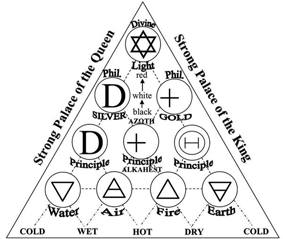 The books’ diagrams as provided from the R.C d’Orient are alchemical triangles that overlay the seven virtues and seven vices over the qualities of alchemical gold, silver, and the three principles of sulphar, salt & mercury.
The books’ diagrams as provided from the R.C d’Orient are alchemical triangles that overlay the seven virtues and seven vices over the qualities of alchemical gold, silver, and the three principles of sulphar, salt & mercury.
The system shows that as we descend into the reverse triangle, into the vices, we undergo alchemical putrefaction or darkness.
What I find important in this teaching is the reference to the descent of the Gifts of the Holy Spirit in relation to embodying the seven virtues by the Adept.
As I often teach, the spiritual powers of the saints are granted to the measurement of our grace.
Ambelain’s work, though heartfelt and great reading, still shows the extent at which most M.O’s will study alchemy… not very much!
Unfortunately for anyone who understands alchemy Ambelain’s work is something of a premature attempt. It is helpful and lovely. But the major phases of alchemy are ignored, as are its key ideas and there are just better forms of spiritual alchemy available.
And by this I mean forms of mysticism that better mirror the alchemical process. 😉
Saint Martin has very little that is truly alchemical and Ambelain is not enough to warrant a strong alchemy score. The above Orders that teach alchemy are not readily available.
The good news is that Ambelain actually quotes the real star of Martinist alchemy:
“There is no real difference between Eternal Birth, Reintegration,
and the discovery of the Philosophers Stone.’ Jacob Boehme.
Jacob Boehme was very alchemical and this raises the alchemy score.
His work ‘Signature of All Things’ is an expansion of Paracelsus’ view on nature, on how everything is living proof of divine order and virtues. The world is a living organism embodying the stars, and Nature is even a holy book leading us to God.
But it is Boehme’s key work the ‘Way to Christ’ where he really shines as an alchemist.
This book is singlehandedly the most important treatise on spiritual alchemy. Most people do not know how to read it or how it relates to alchemy. Much too important to touch upon here I’ll cover his alchemical mysticism in great detail in an upcoming post.
Briefly what he does is transform the figures of the Doctrine of Reintegration into alchemical phases. We relive the suffering of the Fallen Adam through repentance, which descends us into alchemical darkness, or otherwise putrefaction. The New Will we acquire is the Second Adam or Mercury.
As alchemy teaches, this Mercury substance needs to go through several distillations, meaning that it must be evaporated and condensed into liquid form again, whereby it passes from a material experience, into the spiritual as a vapor, and then descends back into the material with new spiritual virtue. This is where the New Will for Boehme needs to surrender to the higher, and die every day according to his mysticism, thus a mystical alchemical distillation takes place.
Lastly, alchemy would not be complete without the Sulfur. His goddess Sophia is the sulfur, who becomes ‘impregnated’ by the New Will. As I have said in previous post this is the phallus of Osiris that is granted by Isis, and as well it is the sword from the Lady of the Lake. This impregnation then gives birth to a new Christ, making you a ‘son of god’ and Philosophers Stone.
Thus Boehme offers us a form of mysticism that constitutes a true ‘Religious Alchemy.’
Brilliant as this is, unfortunately many Martinists never pursue enough alchemy to appreciate the full connotations of his mysticism, even though Saint Martin constantly points out that the works of ‘Our Brother Boehme’ are higher than his own.
Alas many Martinists settle for Saint Martin and never get to Boehme.
Thus considering how closed off the above Orders are, about 90% of M.O’s do not study alchemy, and when they do they barely touch the surface. The M.O however is largely supposed to be a mystical Order and they successfully embody that idea above all others.
At the same time they are one of the Rosicrucian Orders, and if we are to view them as a very real living manifestation of the R.C brotherhood then the M.O’s need to do more in this area.
The Martinist Order is awarded 5/10 for their alchemy score. In terms of the Rosicrucian Pillars, the M.O misses the mark because others do it better.
And now, finally:
In total the Martinist Order gets: 16/30 for their Trinosophia Score 🙂
This particular score was hard to place, seeing that the M.O has bodies that swing from extremes, possessing lots of magical theurgy work, and practicing very high arts of alchemy, all the way down to bodies that possess no teaching at all and everyone studies a free for all.
Without any official teaching we are left to score in the middle of the whole spectrum.
If Martinism had a more official body of knowledge, or course of definite study agreed upon between the various traditions, then that would possibly raise the score. Actually getting the various bodies to agree on anything however would be quite the task. Martinists are after all free-thinkers, and the broad range of approach to me shows the beauty of Martnism.
Further, groups that specialize in alchemy often do so to the detriment of Cabala and magic.
The Arcana Arcanorum of Cagliostro is one of the few transmissions that has all three… As well, Jean Dubuis, former alchemist at Amorc, who established his Philosophers of Nature through a 13 year course of study actually taught all three quite well. The same goes for Amorc, if Jean had never left Amorc they would have had a VERY powerful Trinosophia score! Jean before he died, if he ever did any formal group work, it was also in the setting of Martinism. At that time many Martinist began to implement his path of studies. Moe continuance might have changed this scored today.
My suggestion is for any groups wishing to get back on the Rosicrucian track is to get hold of a copy of his course on Kabbalah, Alchemy and Mysticism and implement that alongside studies of Jacob Boehme. You really can’t go wrong and will have the whole shebang.
Indeed one of my hopes as the author of this blog is that the posts will serve to make various group leaders think and say ‘Ok, we need some more of this or that.’
This blog after all is all about the greater tradition of the Rosicrucian current.
Next blog post; we’ll take a look at the Christianity of Martinism and offer a score.
Liked this post? Don’t forget to leave a comment. 🙂
Update: You can now read the full review of the Martinist Order.
All the best, your friend Samuel Robinson
Founder of Pansophers.

[1] Paul Rana.

